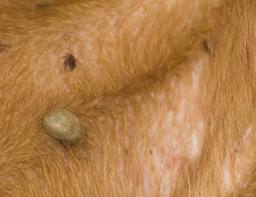
Tick bite fever in dogs (Biliary, Babesiosis)
Tick bite fever, also called Biliary or Babesiosis is a disease caused by a parasite carried by ticks. This article discusses common symptoms of ticks bite fever, biliary, babesiosis, treating tick bite fever, biliary babesiosis, prevention of tick bite fever by vaccinating dogs and using good tick control and common complications seen with tick bite fever.
